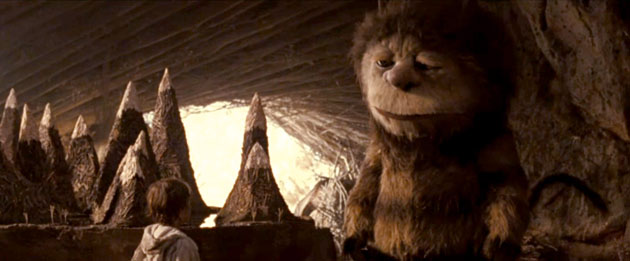K.K. Barrett

AS: Are you involved a lot in CG nowadays or does it end up just being a post-production thing?
KK: I’m involved in it. I’m very frustratingly involved in it. So many things can go wrong. It’s done at the end. It can be farmed out to five or six different places depending on how important it is. Those five or six different places may not have their best man on it. I did a lot of interviewing on the last movie for special effects supervisors and companies and what I realized was that what you really want to do is have a relationship with the artist who’s actually doing it. Just like you would with an illustrator who’s working under you. To be able to correct things and see things that they don’t see, because you’re more familiar with the project.
AS: You mean the individual CG artist modeling the environment?
KK: Yes. They’re the ones you have to trust. You could actually save a lot of money by dealing with them directly because you could decide what was important and what was not. And know when something’s done. I would take direct interface with the renderers. Often changes are translated through others.
The first time I worked with green-screen was 1980. It was the first film I ever did. No budget. Everybody learning. Bluescreen and greenscreen. Because we had something in frames side-by-side and we didn’t know if we could key them in and separate them. It wasn’t so easy to make windows and mattes back then. I was coming from working on film motion graphics which was the early predecessor to the computer work. So you could just do a straight key but you didn’t have a computer to do it. You were just keying out blue and keying in your image. If you wanted two things to key in into the same frame you had to have different color channels to replace. So it was a little bit trickier.
AS: Did you do that film before your commercial and music video work?
KK: I did that film before I did anything. Because the band I was in hooked up with a director and he wanted to do some musical projects. This was before MTV. There really wasn’t an outlet for musical short films. It got rebuilt into a linear story and then we shot connective tissue to put the different song bits together. And I had built a recording studio that was like a soundstage in an old vitamin factory. I just volunteered to do the work. I said, Well, who’s gonna design it? And he said, I don’t know.
I said, I will. I’d never designed anything for film. I’d studied art in school as a painter and a sculptor. I wasn’t afraid of it. I didn’t really know what an art director did. I didn’t know what a production designer did. Somebody told me that that’s what the name of the job was. But I was always a voracious reader and I looked it up and figured it out. And then, because I had done that at that time, six months later videos started happening and they were so cheap that anyone who said they could do it got the job. So I did a lot. And then those video directors started making commercials.
AS: Is that when you met Spike Jonze?
KK: Yeah. I did a commercial with him. His producer Vince Landay knew I was doing work for someone else in the building and he kind of hooked us up. We met and started talking. Found out that we’d been a lot of the same places years before. Sat across the room at the same party, knew people in common, things like that.
Pingback: Grant Major